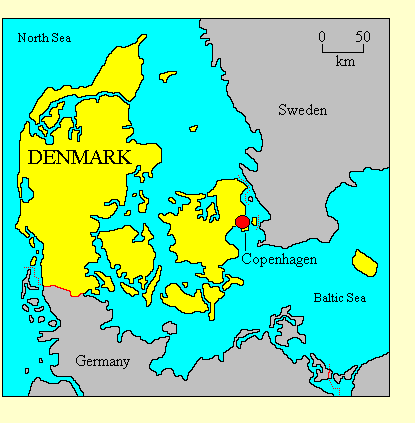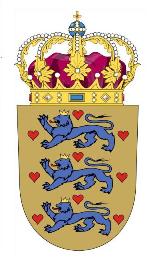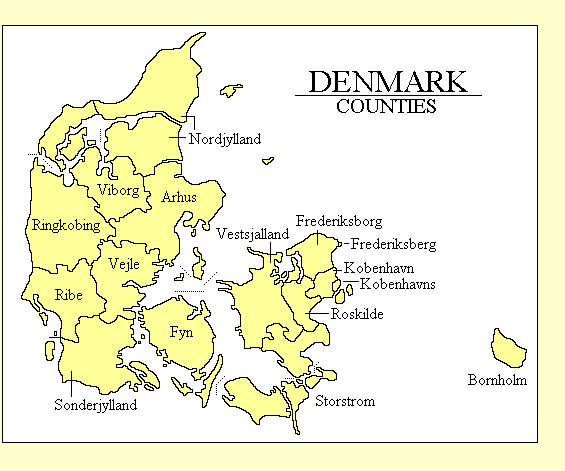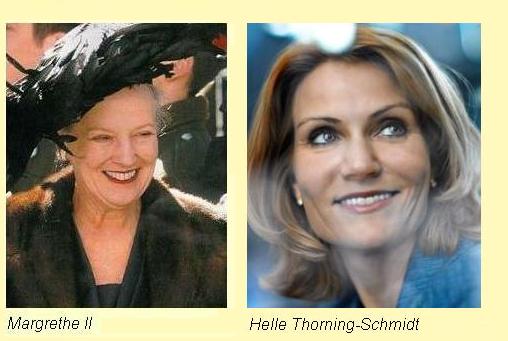

KINGDOM OF DENMARK
• Official name: Kongeriget Danmark (Kingdom of Denmark)
• Location: Northern Europe
• International organisations: Council of Europe, European Union, North Atlantic Treaty Organisation,
Organisation for Economic Co-operation and Development, Organisation for Security and Co-operation in Europe,
United Nations, World Trade Organisation
• Borders: Germany
• Coastline: Baltic Sea, North Sea
• Land area: 43,094 Km2
• Population: 5,500,000
• Annual GDP (PPP) per capita: US$36,000 (2009 CIA estimate). World ranking: 23
• Ethnicity: Almost the entire population is of Danish stock.
There is a small German minority and small immigrant communities.
• Languages: Danish is the official language and is universally understood.
German is spoken in a few border districts.
• Religion: The Evangelical Lutheran Church is a state church. Over 90% of the population are nominal Protestant Christians,
but Denmark is a highly secularised country. There are small Catholic Christian and Moslem minorities.
• Form of government: Constitutional monarchy and parliamentary democracy. Denmark
is divided into 14 counties and two boroughs. The island of Bornholm in the Baltic is a
county. The Faroe Islands and Greenland are part of the Kingdom of Denmark but are
entirely self-governing.
• Capital: Copenhagen (Kobenhavn)

• Constitution: The
Constitution of the Kingdom of Denmark came into effect on 9 June 1953.
• Head of state: Queen Margrethe II came to the throne
on 14 January 1972.
• Head of government: The Prime Minister, appointed by the Queen. The Prime Minister
is the leader of the largest party in the legislature and is accountable to it.
• Legislature: Denmark has a unicameral legislature. The People's Assembly (Folketing) has 179
members, elected for four-year terms by proportional representation. 175 members
are elected in metropolitan Denmark while the Faeroe Islands and Greenland each elect two members.

• Electoral authority: The Danish Interior
Ministry administers national elections
• Freedom House 2011 rating: Political Rights 3, Civil Liberties 3
• Transparency International Corruption Index: 93% (1 of 178 countries rated)
• Reporters Without Borders Press Freedom 2010 Index: 75% (11 of 178 countries rated)
• Heritage Foundation Economic Freedom 2010 Index: 78.6% (8 of 179 countries rated)
Political history
Denmark, an independent kingdom since the 9th century, was an absolute monarchy until 1849, when Frederik VII was
persuaded to agree to a Constitution. The 1849 Constitution established a two-house legislature and a
responsible ministry. The vote was restricted to males who met a property qualification.
In 1915 the vote was extended to all adults, including women, and in 1953 the upper house of the legislature was abolished.
Denmark was occupied by Germany 1940-45. As a result of this experience Denmark abandoned its traditional
neutrality and joined NATO in 1947. Denmark joined the European Union in 1972.
Danish politics were dominated for 40 years by the centre-left
Social Democracy in Denmark, which
came to power under Thorvald Stauning in 1929, but its
dominance has faded since the 1970s. The left-wing vote has fragmented, with the
Socialist People's Party, the
Radical Left-Social Liberal Party and the
Unity List-The Red Greens also represented
in the legislature. The largest party on the right is the
Liberal Party of Denmark, which is allied with
the Conservative People's Party and the
Christian People's Party. The
Danish People's Party, a far-right
populist party, has upset the traditional pattern of Danish politics.
The Social Democrats were in office under Poul Nyrup Rasmussen from 1993 to 2001. They were defeated at
the 2001 election and the Liberal leader Anders Fogh Rasmussen formed a government. He was easily re-elected in 2007.
In 2009 Rasmussen resigned to become Secretary-General of NATO and was succeeded by Lars Lokke Rasmussen. (The three Rusmussens were not
related.) At elections in September 2011 a left-wing coalition headed by the Social Democrat leader
Helle Thorning-Schmidt was elected.
Updated November 2011
|

